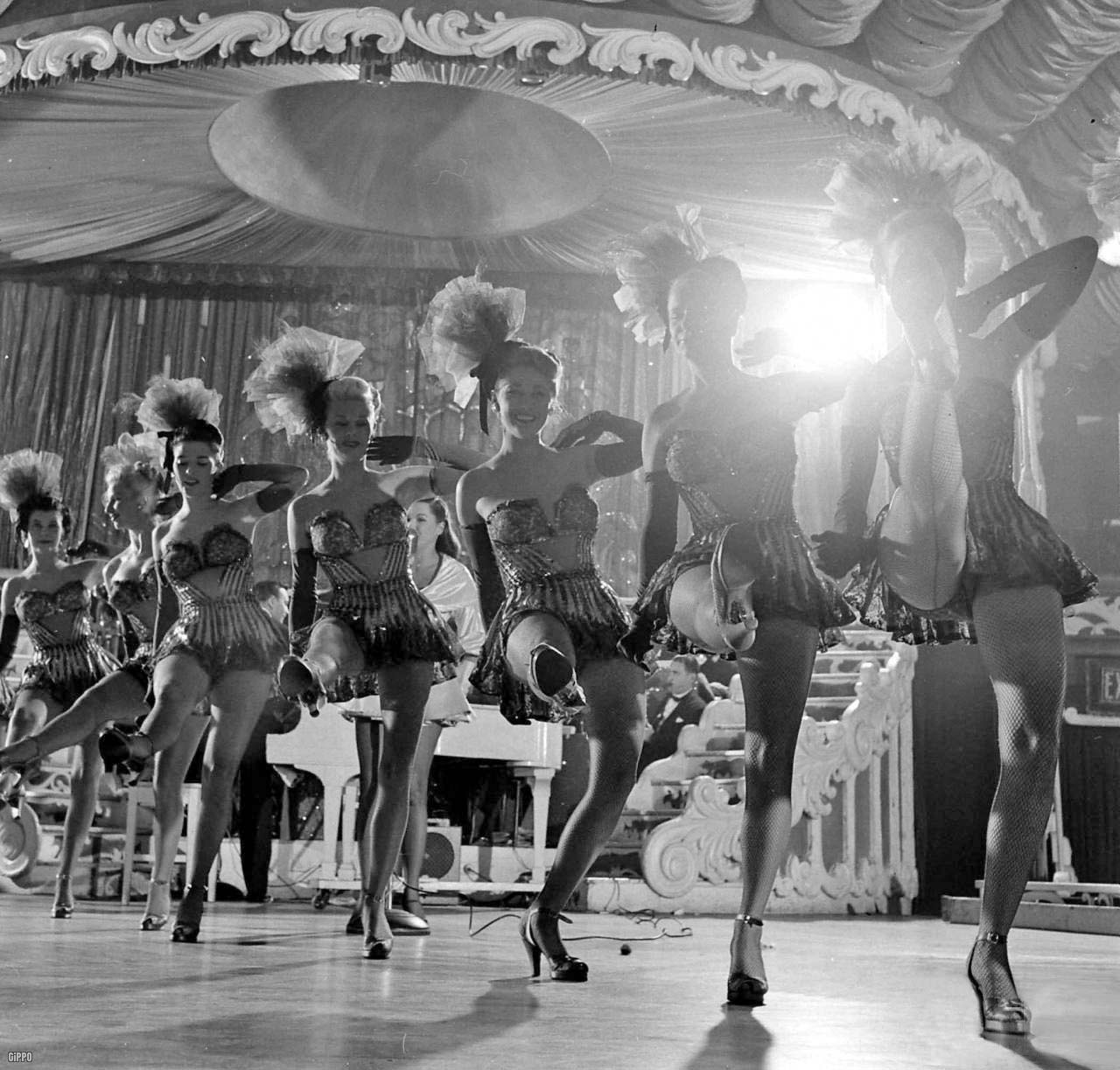
1949 Latin Quarter Chorus Girls
In the mid-1800s, the music halls of Paris suddenly were presented with high-kicking, cartwheeling ladies doing the Can-Can. The performances were scandalous, and quickly made their way over to the States by the late 1860s. In England, other troupes of choreographed female dancers began to find success, including Tiller Girls and The Gaiety Girls; however, they were much less provocative than their French and American counterparts. These synchronized dancers basically owned the stages of the early twentieth century, with major acts like the Ziegfeld Follies and The Rockettes and countless “lesser” productions appearing across Europe and the US.
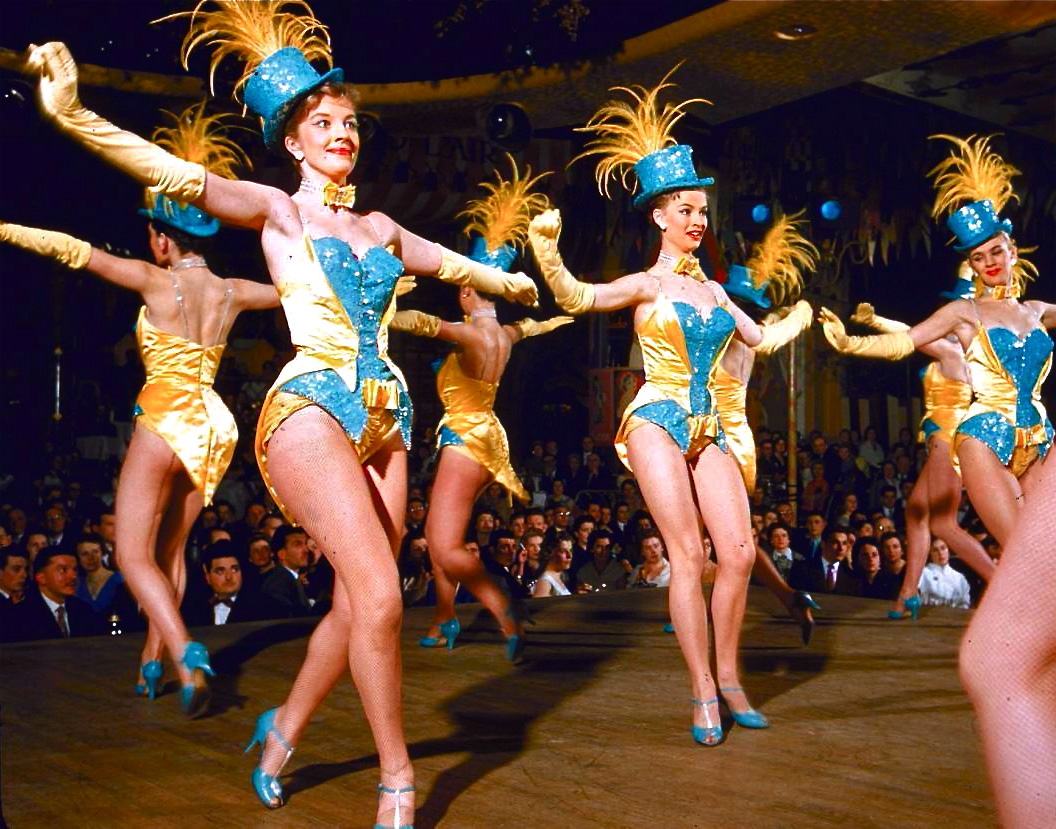
Parallel to the chorus line were performances which centered more on the female body. Cabarets such as the Moulin Rouge, Le Lido, and the Folies Bergère featured dancers with a more erotic flavor. Many decades later, the style found mega-success in a booming desert oasis called Las Vegas.
But all good things eventually come to an end. We still have The Rockettes and certain Vegas casinos keep the torch alive, but the golden age has certainly passed. The decline was due in no small part to the rise of burlesque and strip clubs. If men just wanted to see some risque dancing, the Pussycat Lounge had more to offer than a Broadway chorus line, and it cost a lot less to attend and to produce. It was a win-win for the striptease and a lose-lose for polished stage productions. And, of course, the striptease would also end up on the losing side once in-home entertainment (VHS, Internet) found its way to the male consumer.
So, let’s have a look at the twentieth century showgirl before the decline. Enjoy.

1949 Latin Quarter Chorus Girls
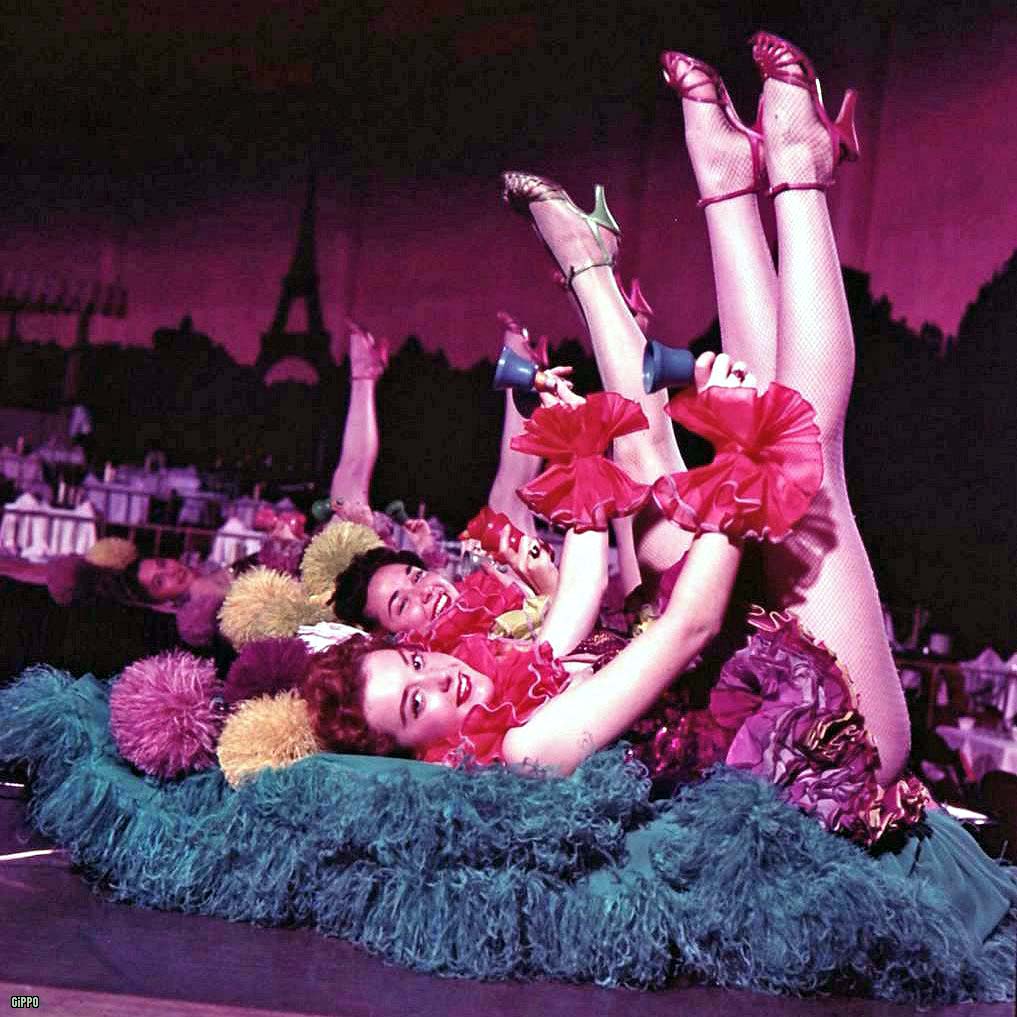
Moulin Rouge Night Club 1954
The Moulin Rouge suffered various downturns including a fire in 1915 which basically burned it to the ground, and then German occupation. In June 1951 the Moulin Rouge was reopened and the cancan was officially back.
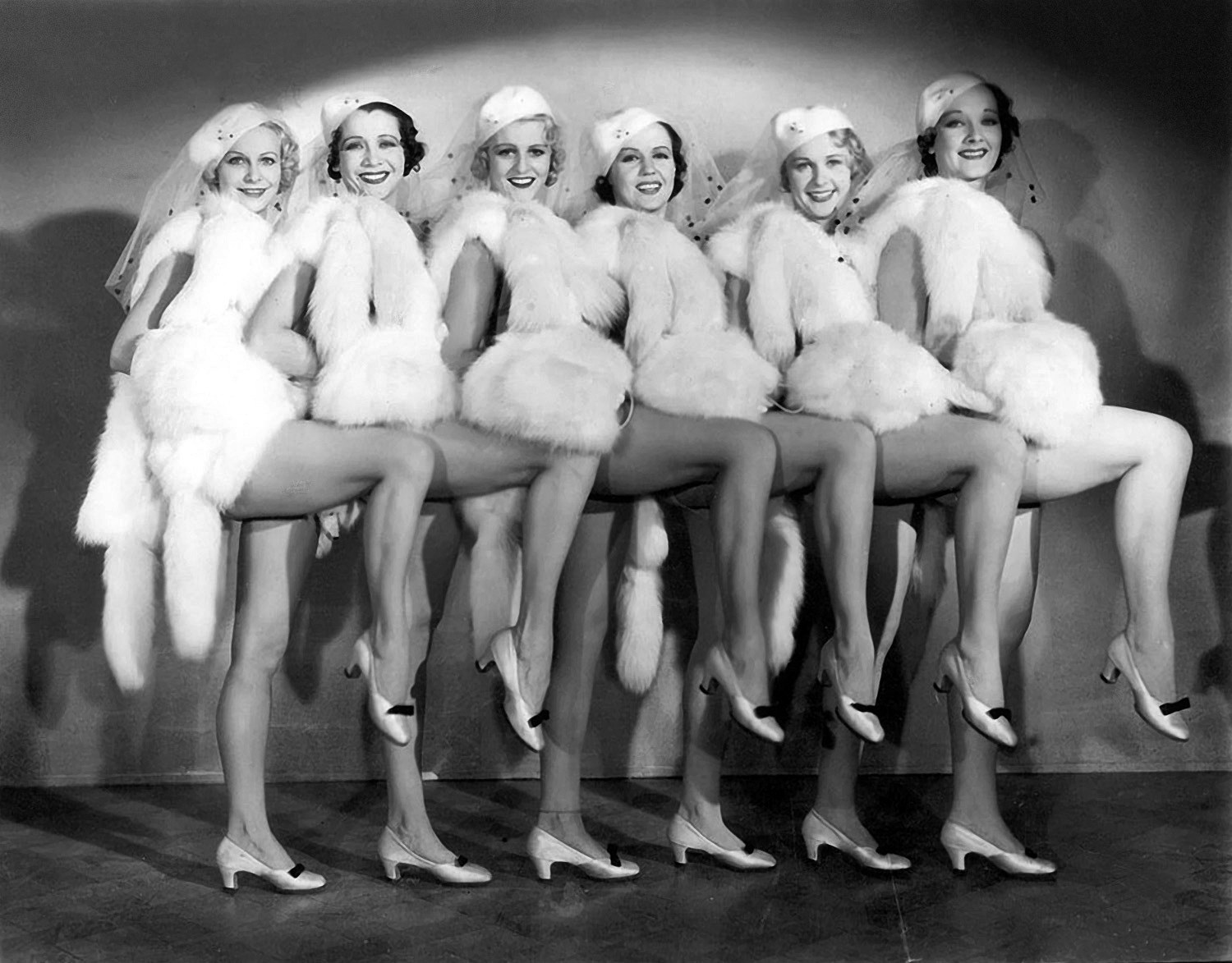
Footlight Parade-1933
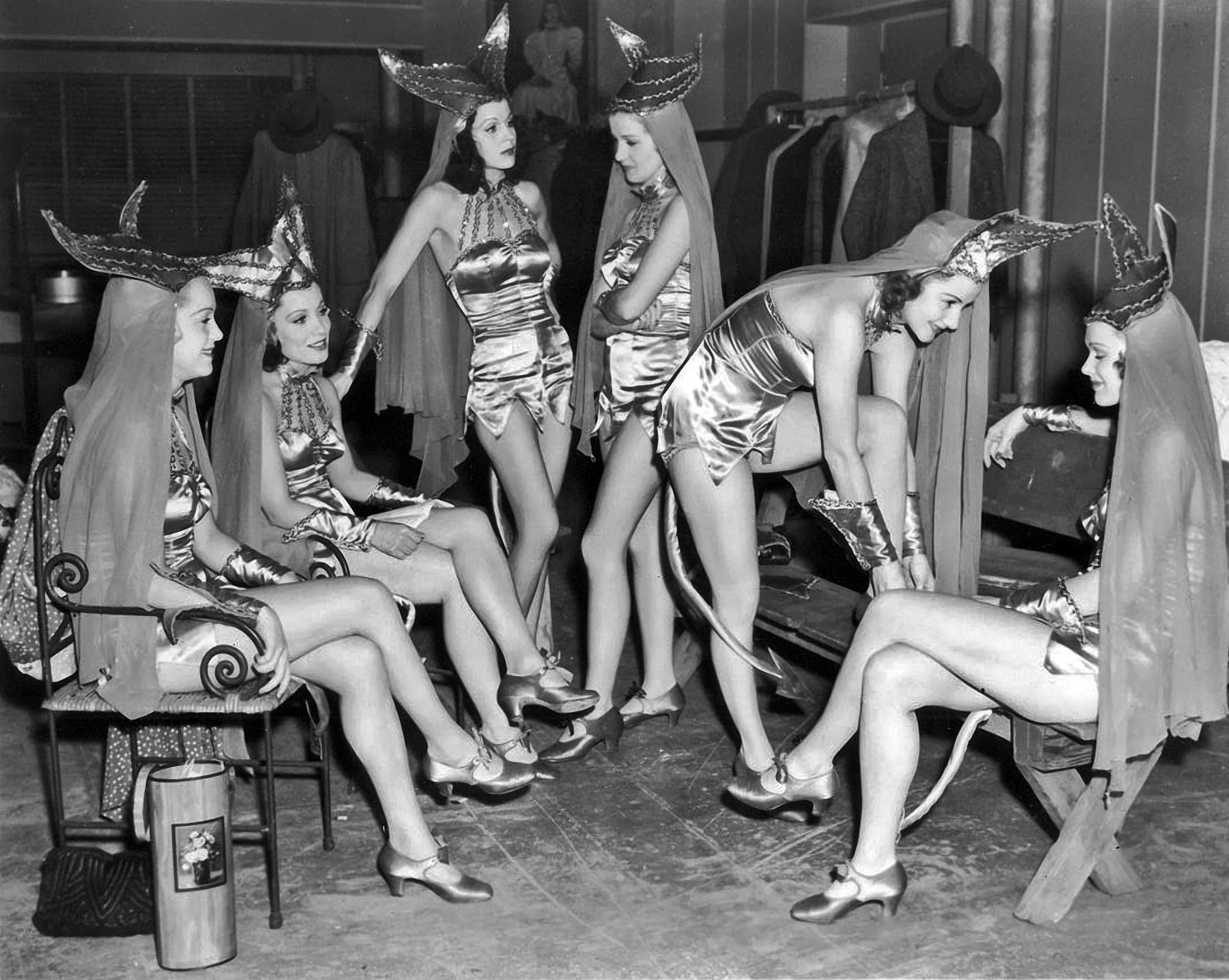
1920s Ladies Chorus Line backstage
The costumes for these chorus lines were often nothing short of brilliant – a forgotten art.
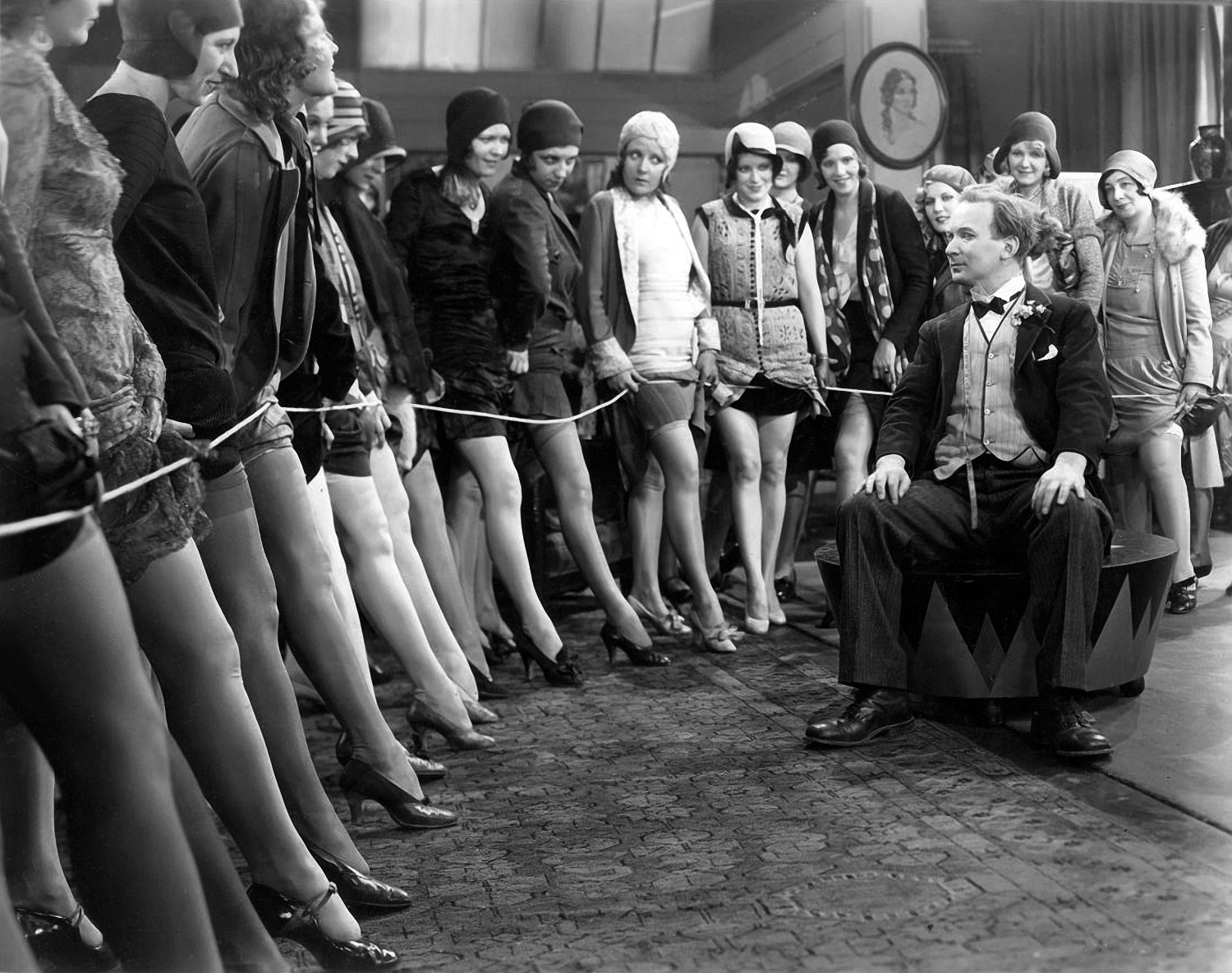
1927-Chorus girls demonstrating their assets for the producer
Let’s face it, folks. It was all about the gams.
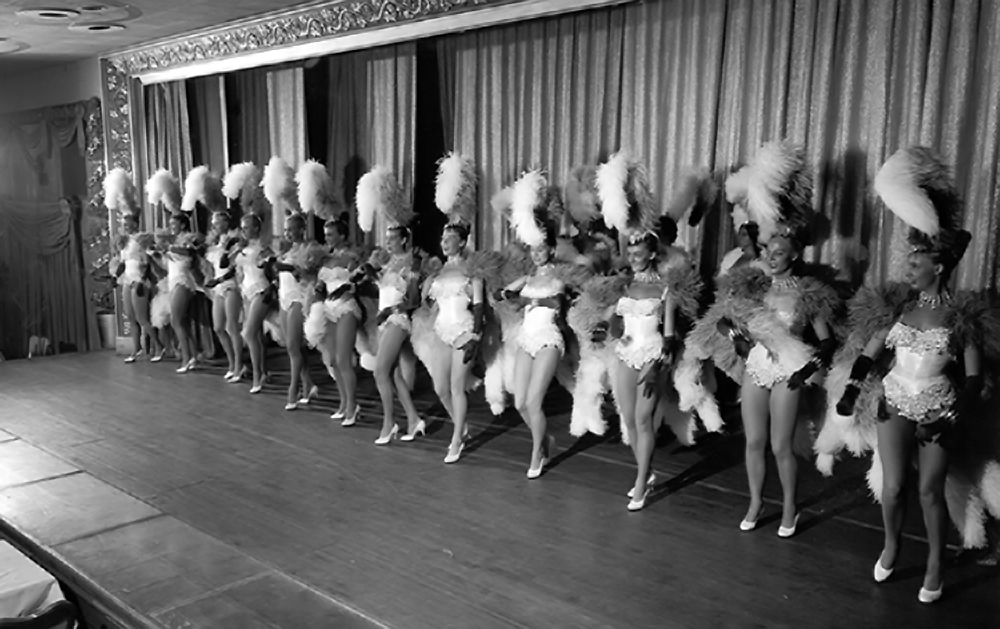
Rancho Las Vegas
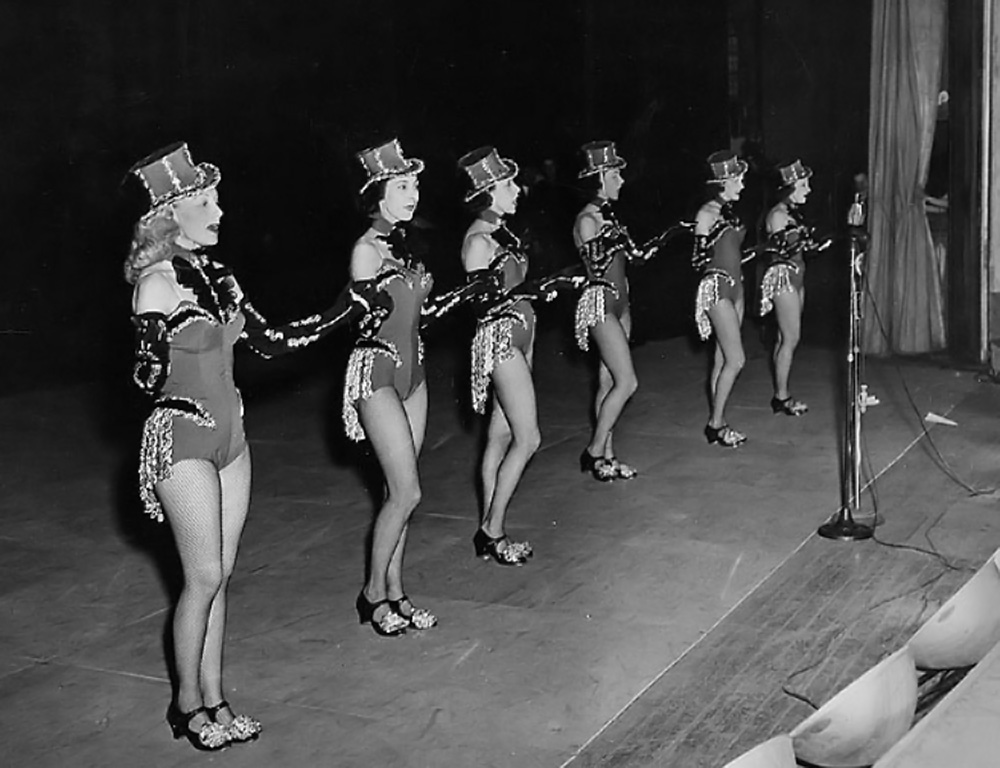
Rockettes in the early days
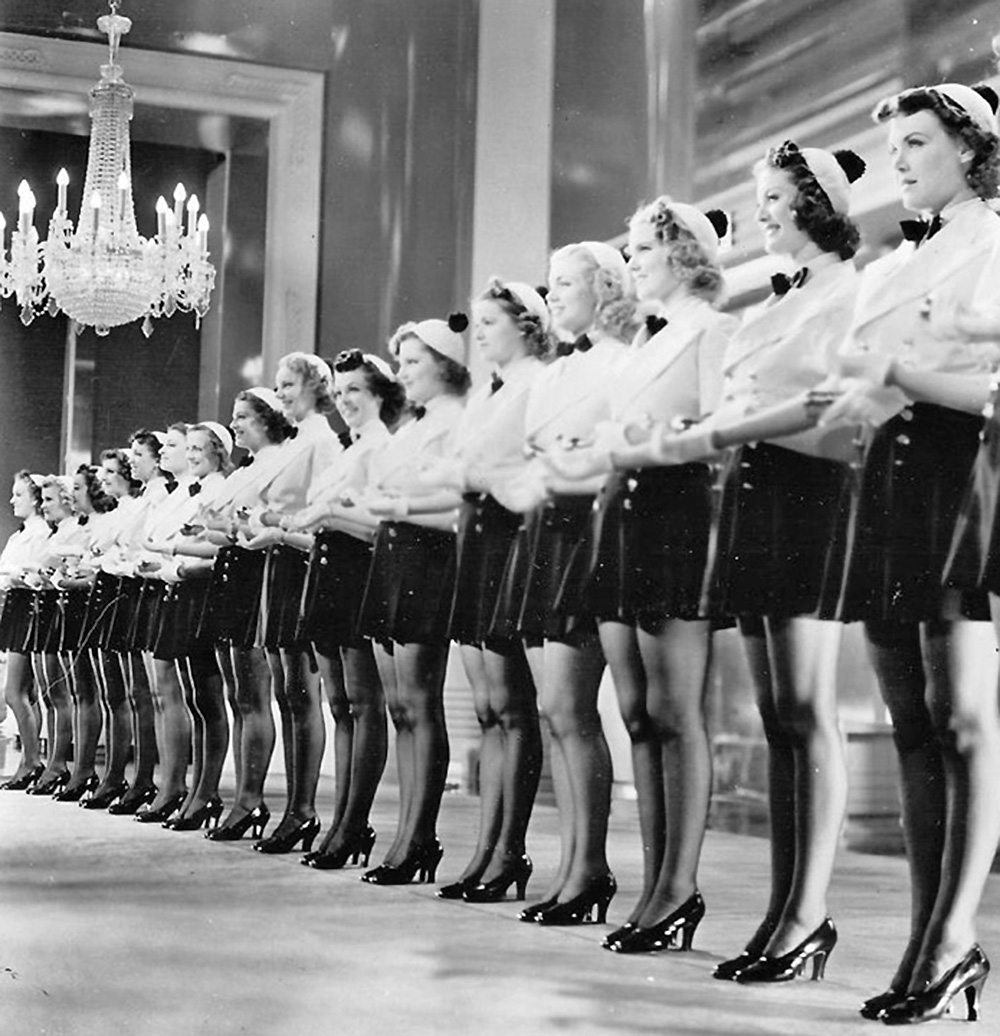

A trio of chorus girls from 1960. Let’s not forget that these stage shows weren’t limited to major metropolitan locales. Even places like Oklahoma City and Phoenix, Arizona had their own local productions.
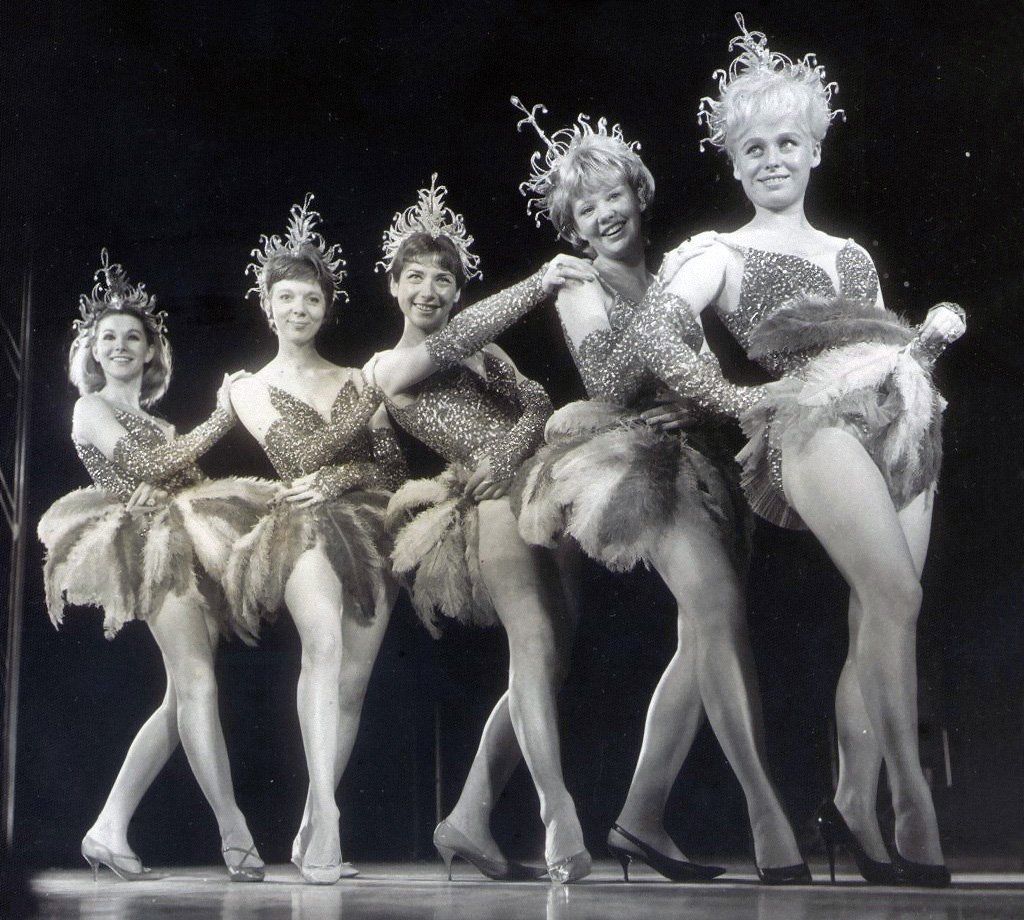
Susan Hampshire, Anna Massey, Miriam Karlin, Hayley Mills, and Barbara Windsor at the London Palladium in The Night of 100 Stars in 1964.
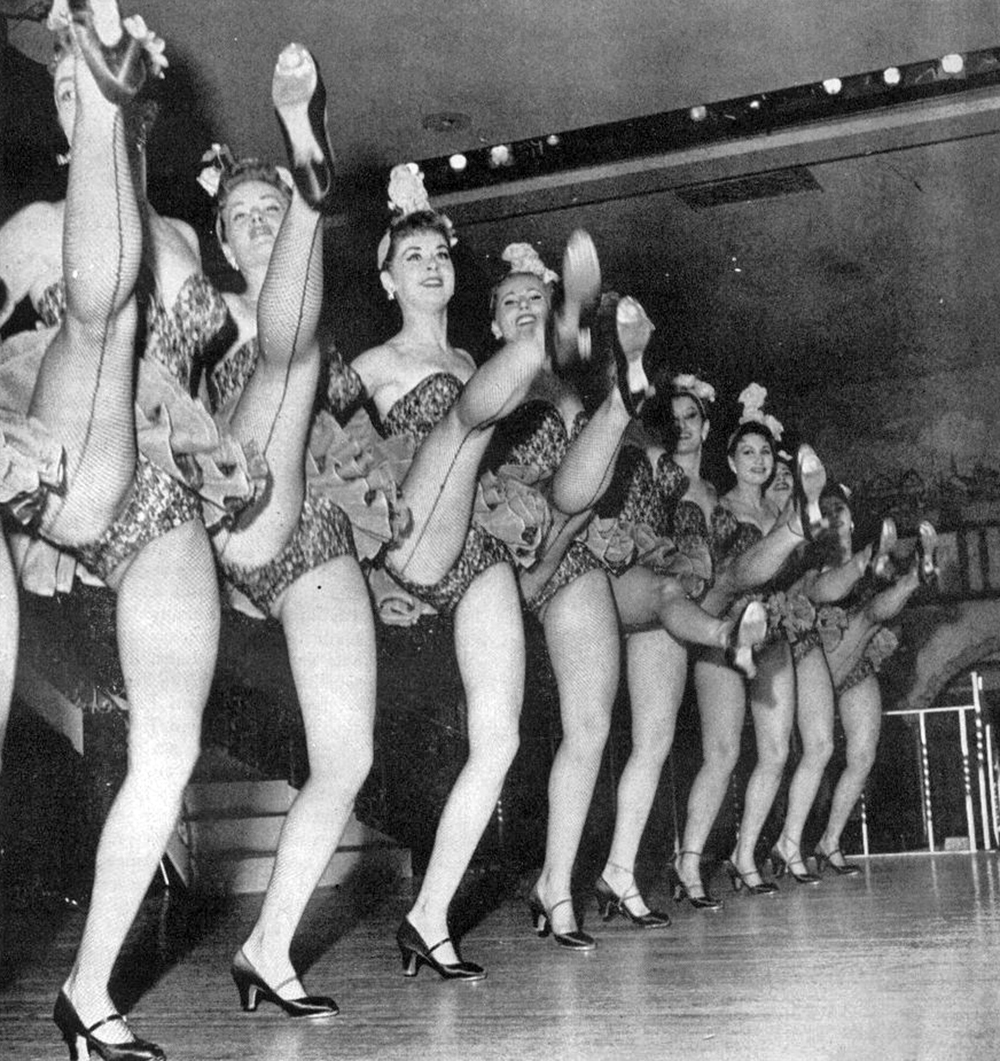
The Morro Landis dancers. Founded by George Moro and Ruth Landis, both former dancers, established a dance studio that stocked chorus girl lineups from coast to coast.
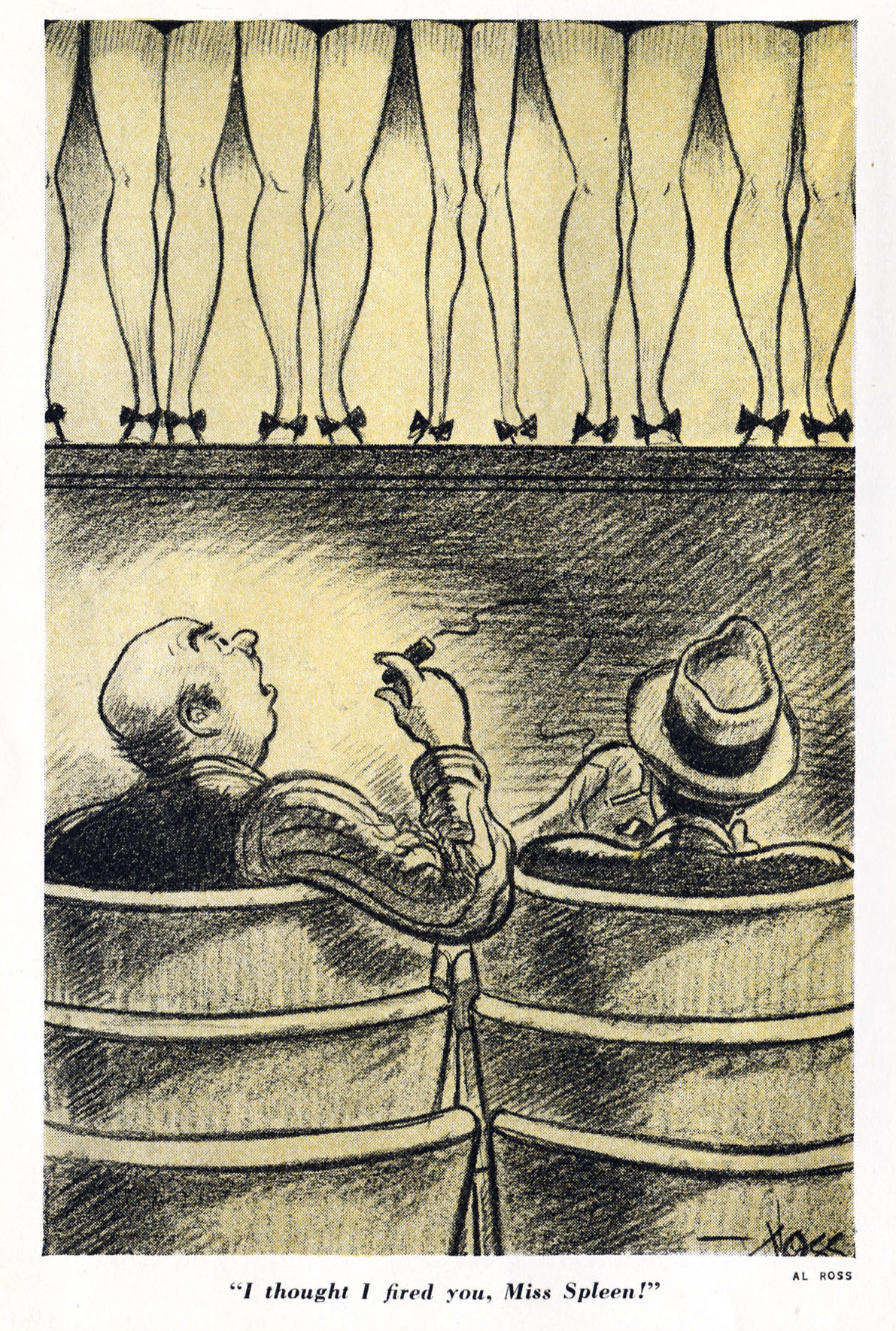
For Men Only magazine (1937)
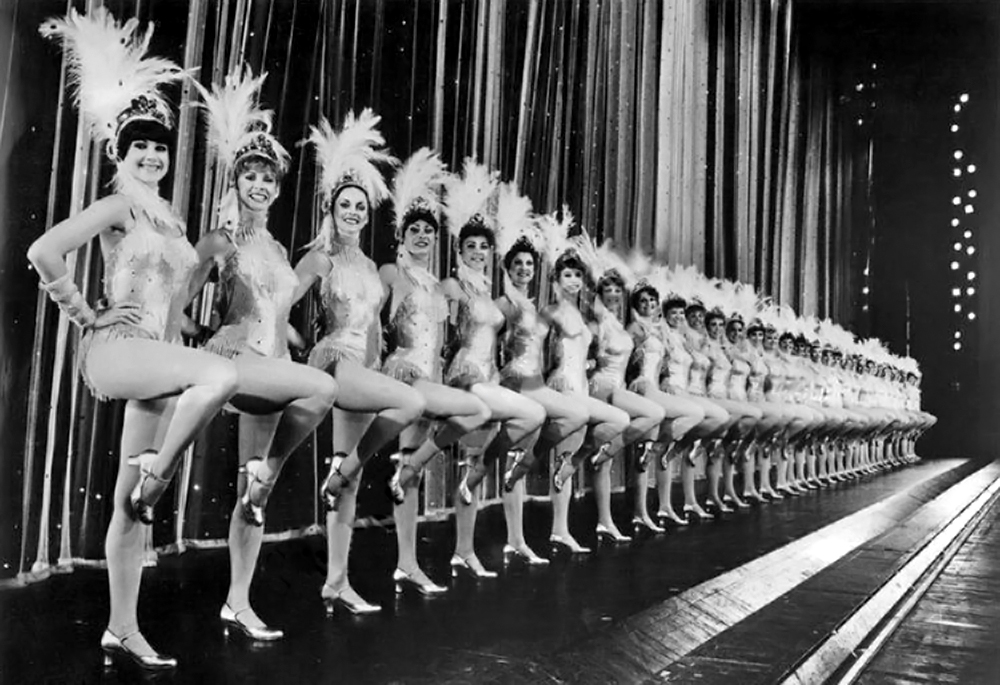
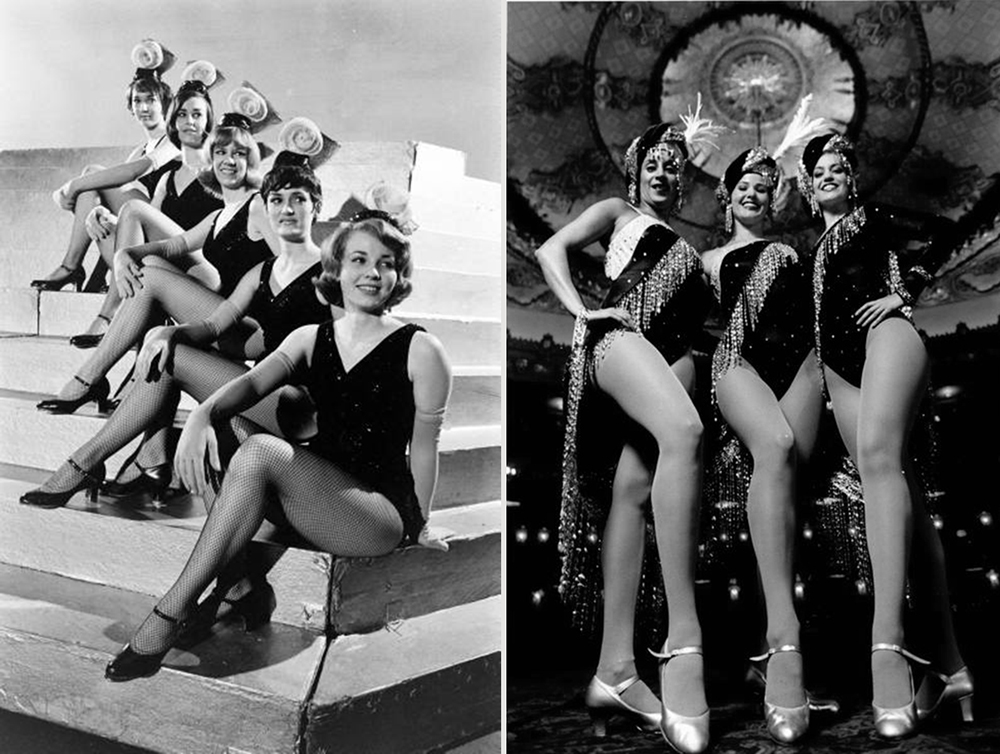
(L) Rockettes 1964

Being a chorus girl often meant long hours of performing and training. It wasn’t an easy life.
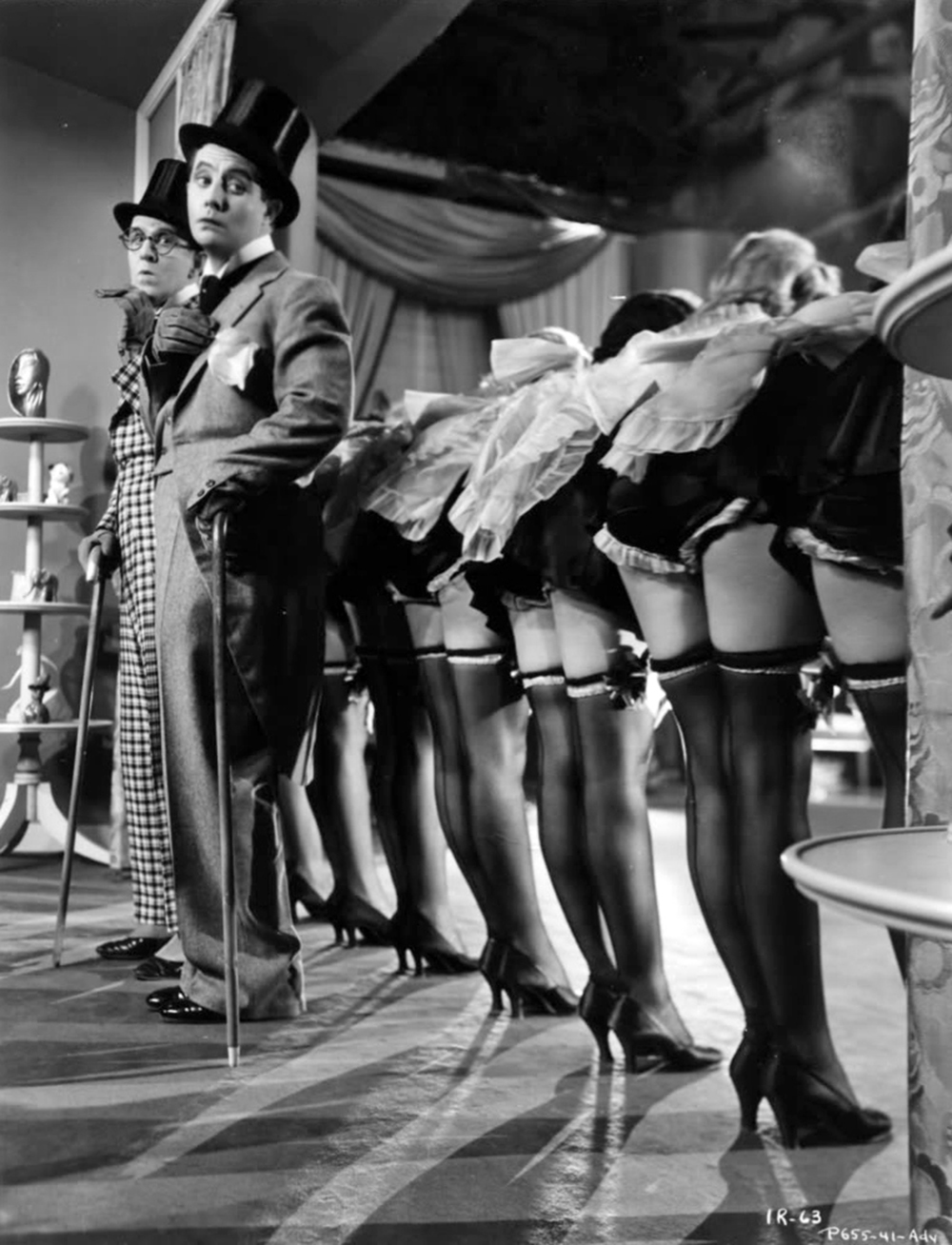
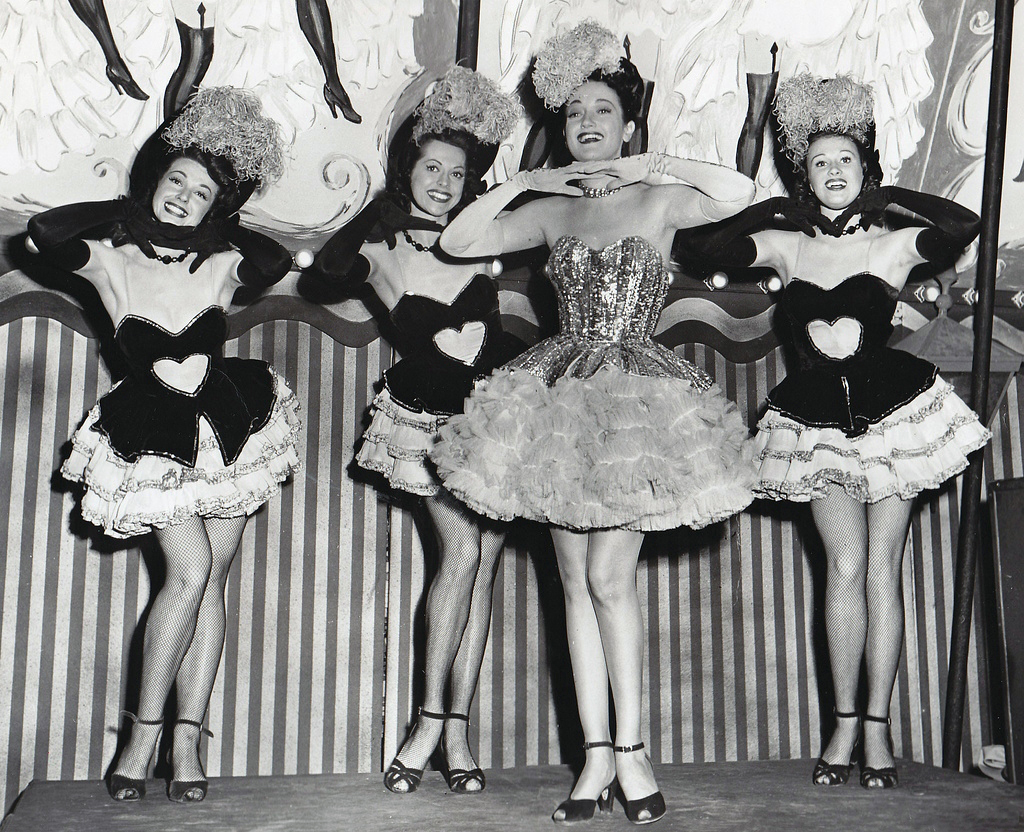
Dorothy Lamour 1948
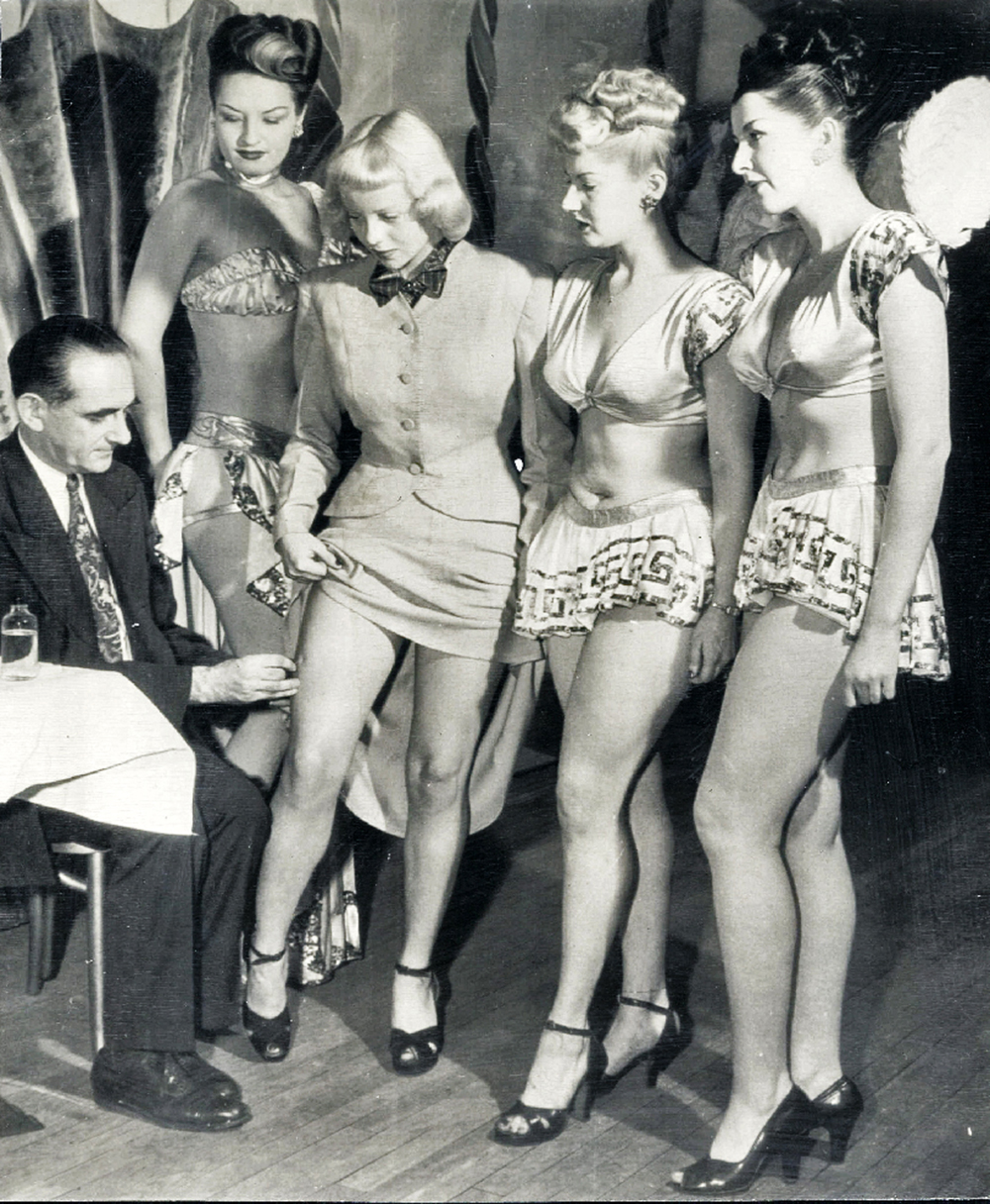
What’s going on here? Is the stage director examining and testing his new recruits to see if they’re worthy?
Nope. He’s administering the Smallpox vaccine to his chorus line girls (from a 1947 New York newspaper).
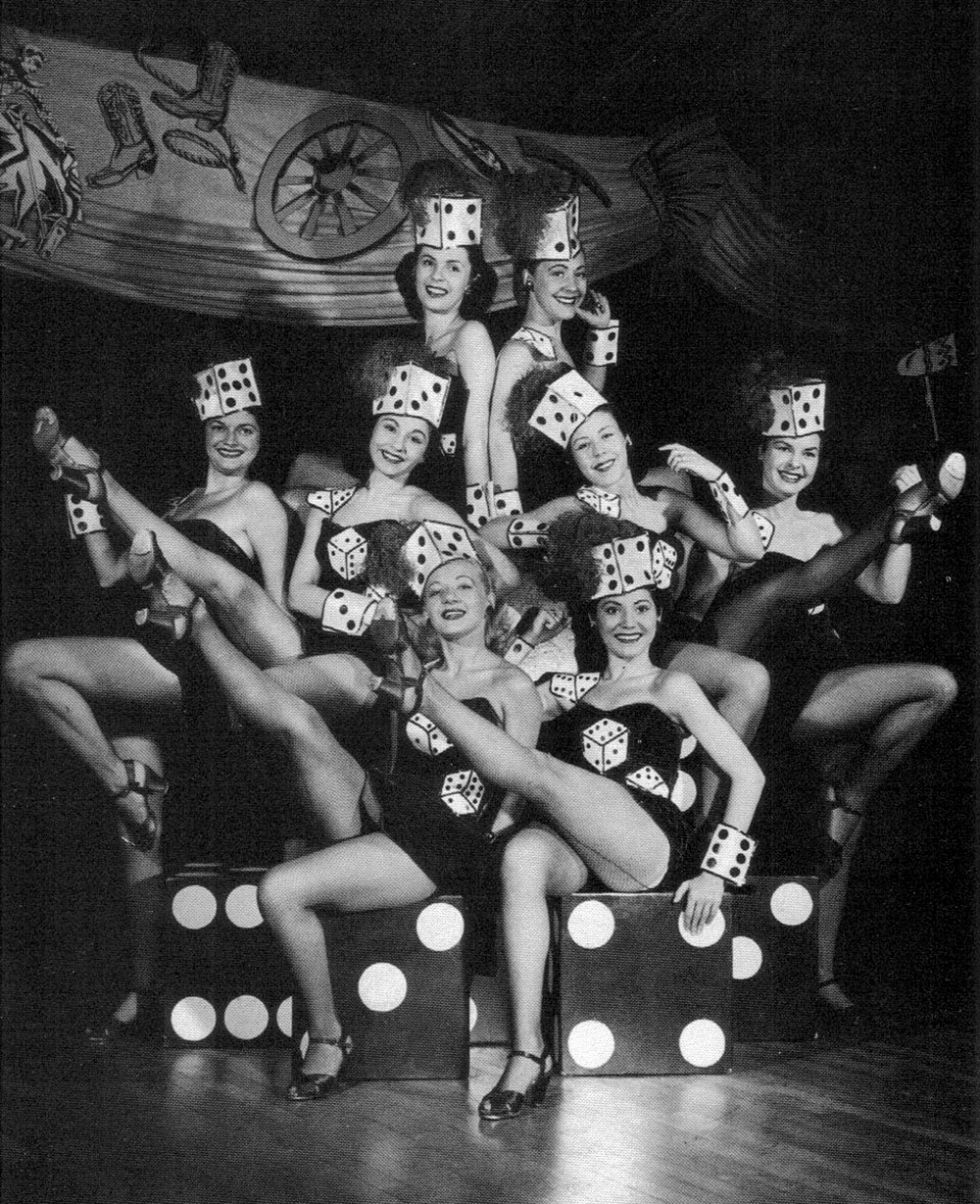
Luck be a lady tonight.
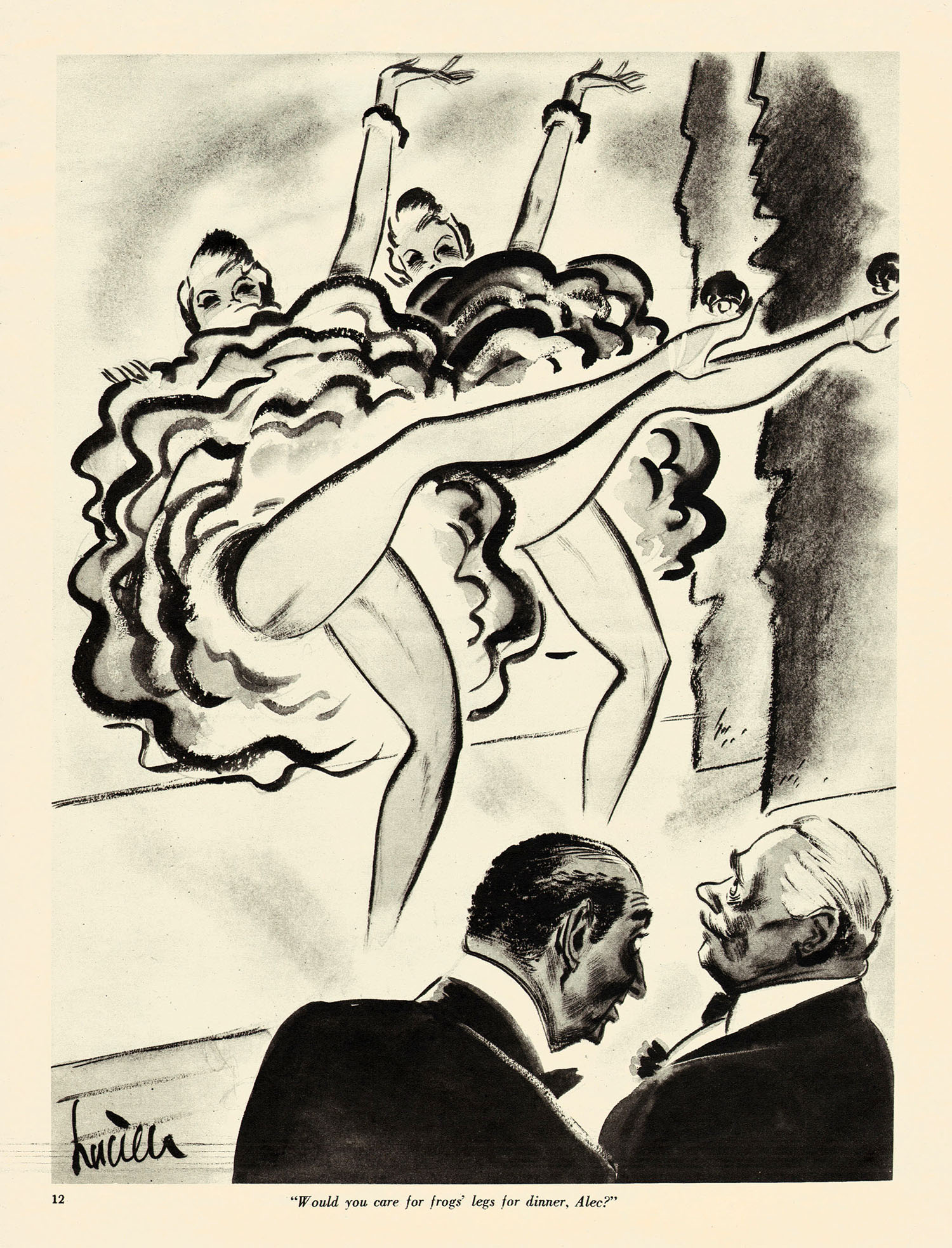
Laff magazine, vol. 2, no.1 (1940)

The so-called “Flo Test” is described in a 1965 article in the California Desert Sun newspaper: “One of Florenz Ziegfeld’s basic tests for a chorus girl in his lavish Follies of the 1920’s was to see if she could bold 50 cent pieces between the ankles, calves and knees of her shapely legs. If her stems went ) ( , she was eliminated.”
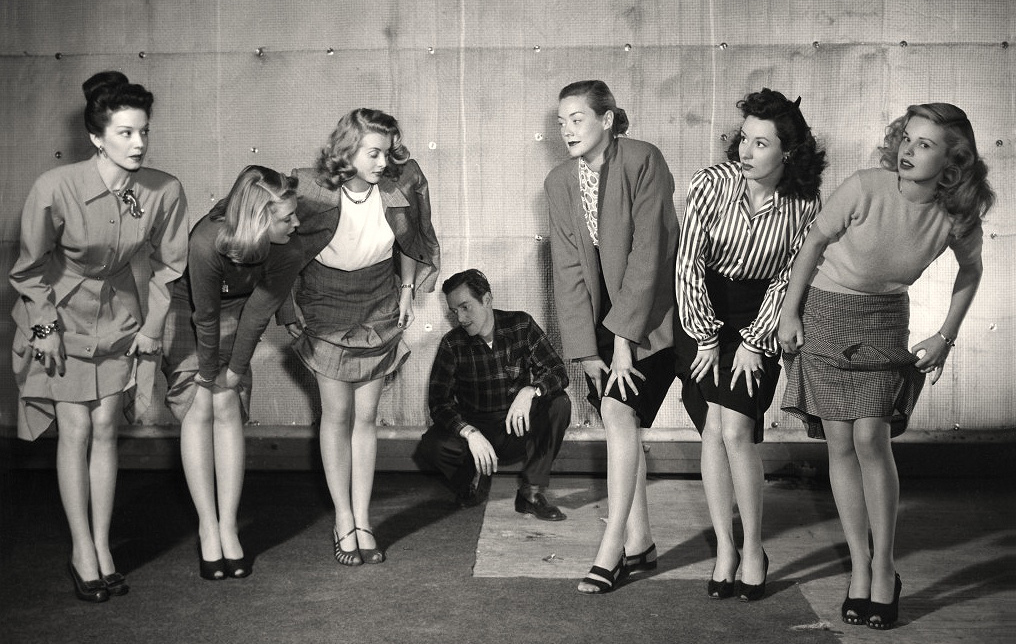
Chorus girl leg inspector. Best. Job. Ever.
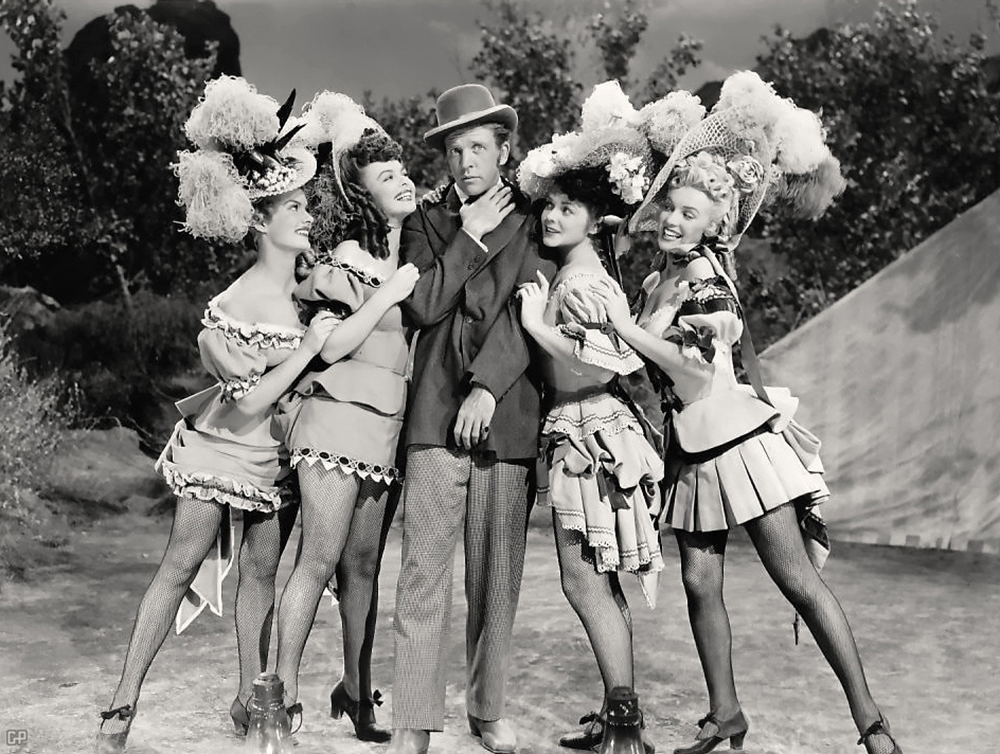
A Ticket to Tomahawk (1950) featuring Marilyn Monroe
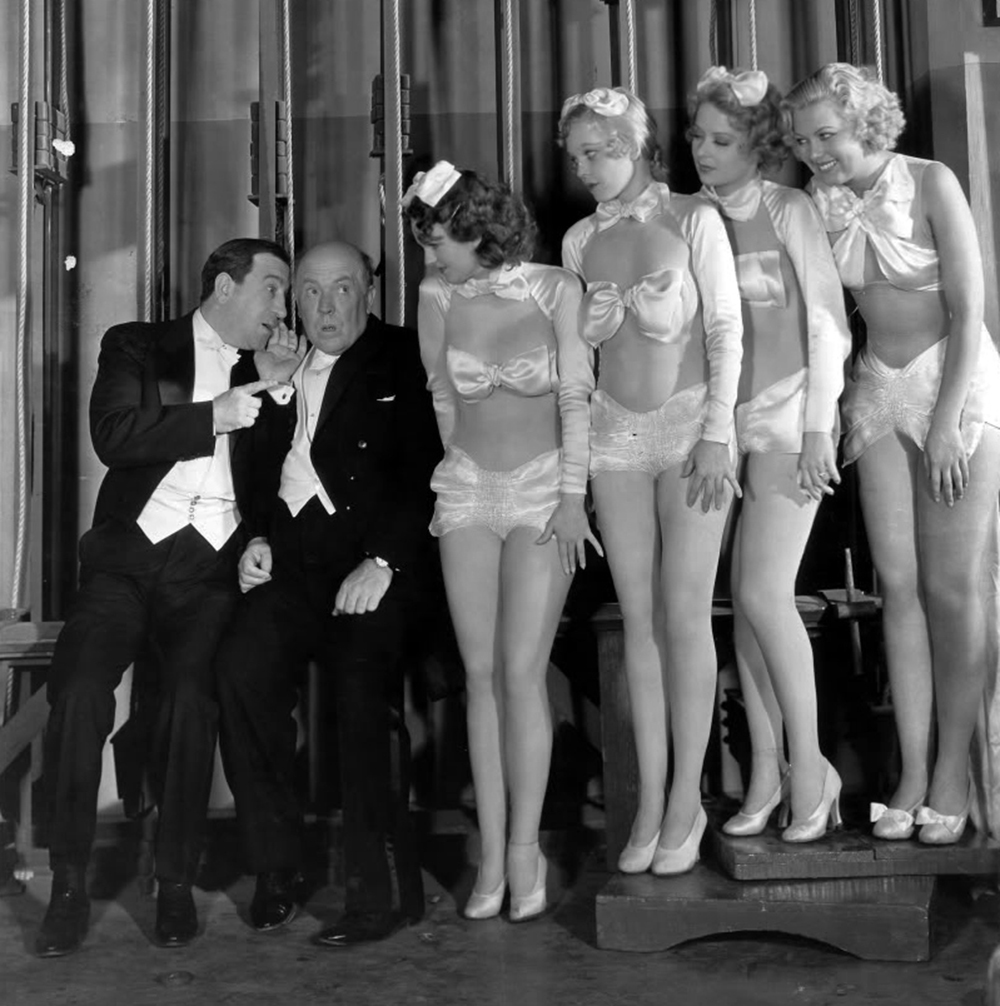
From the 1934 film Dames, which introduced the world to “I Only Have Eyes For You”.
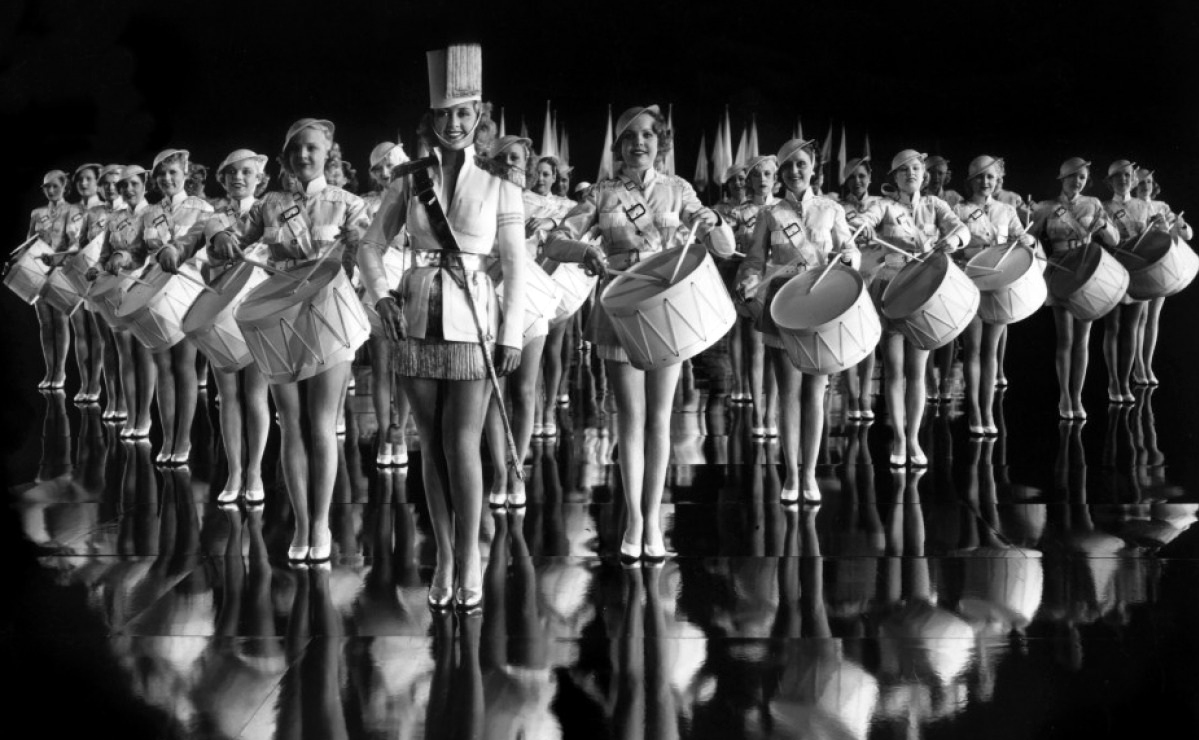
Joan Blondell in Footlight Parade 1933
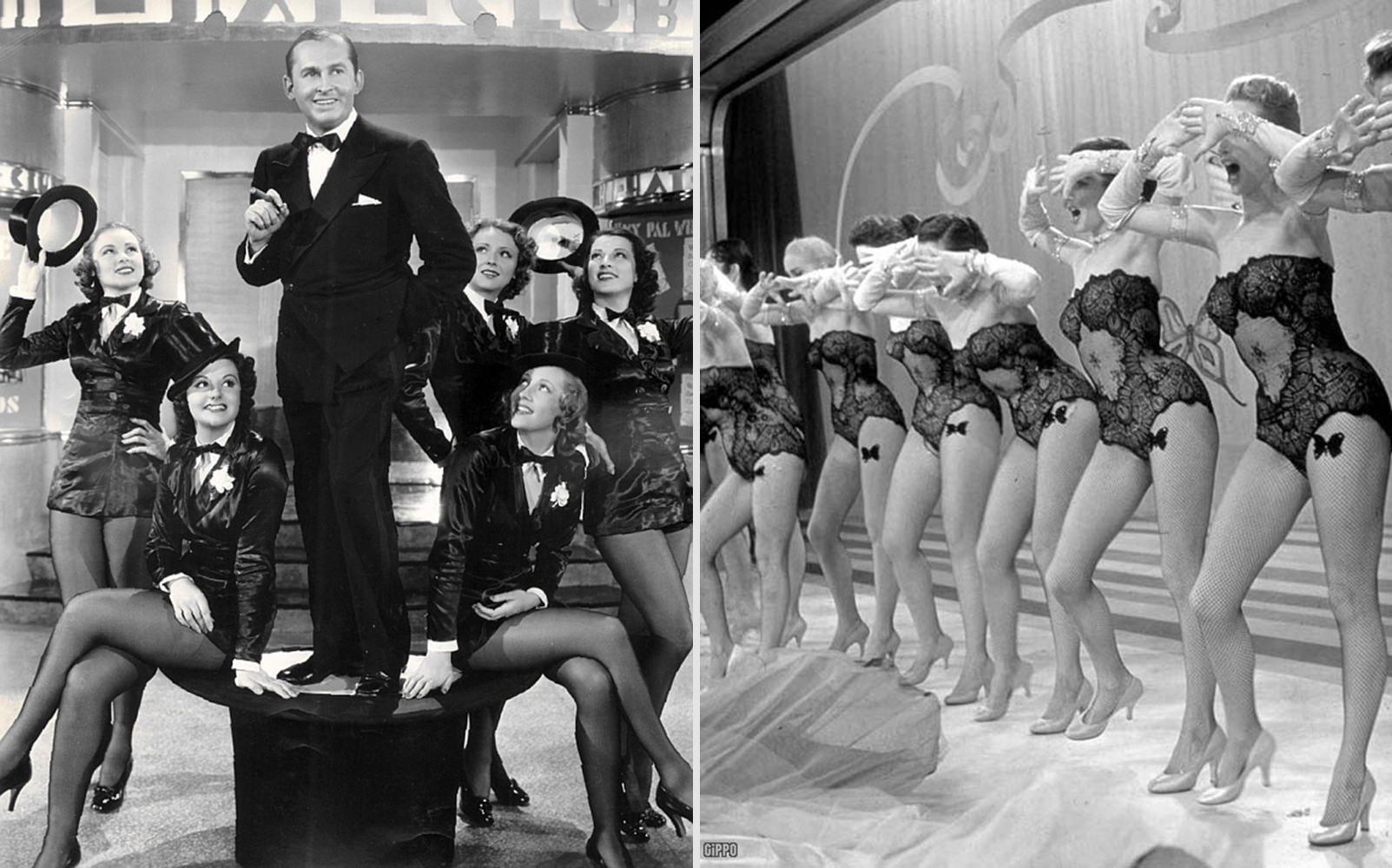
(L) Jack Benny, (R) Guys and Dolls
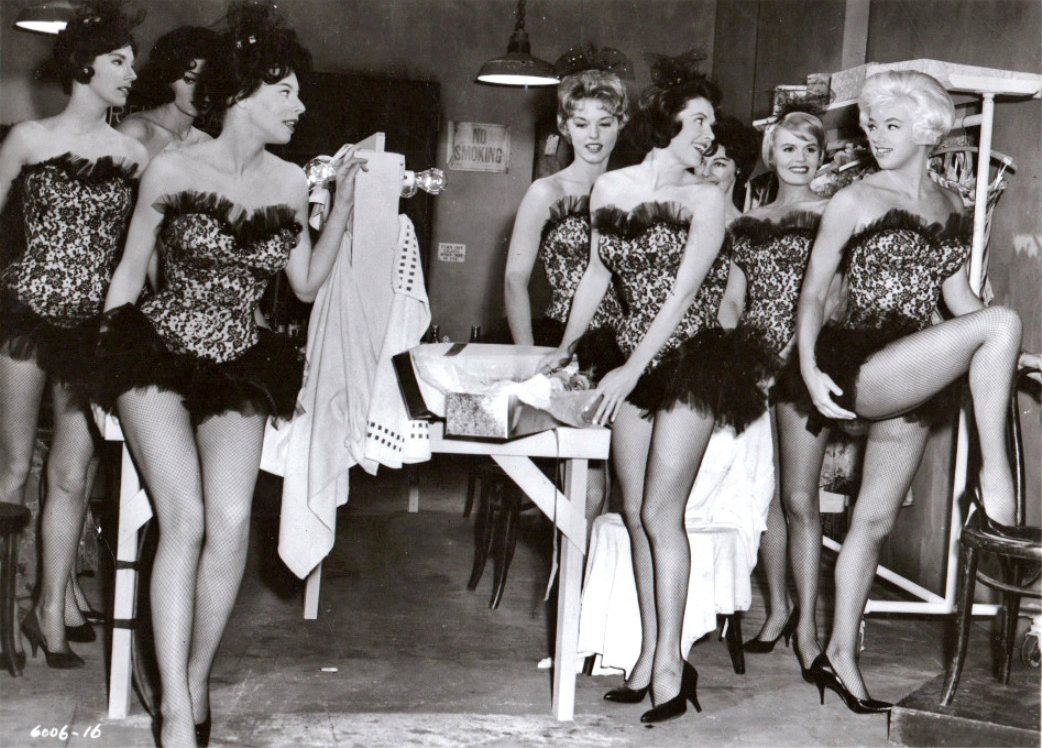
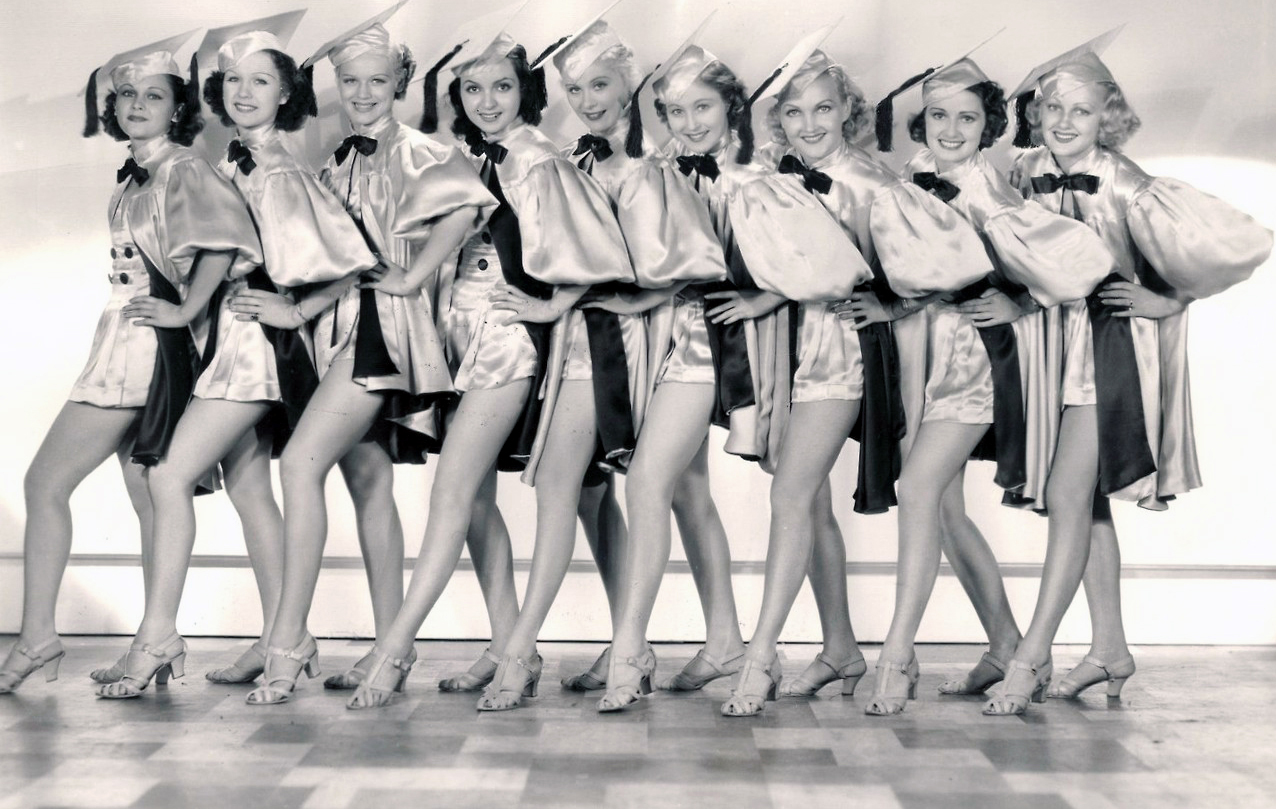
1935 chorus line girls looking very collegiate
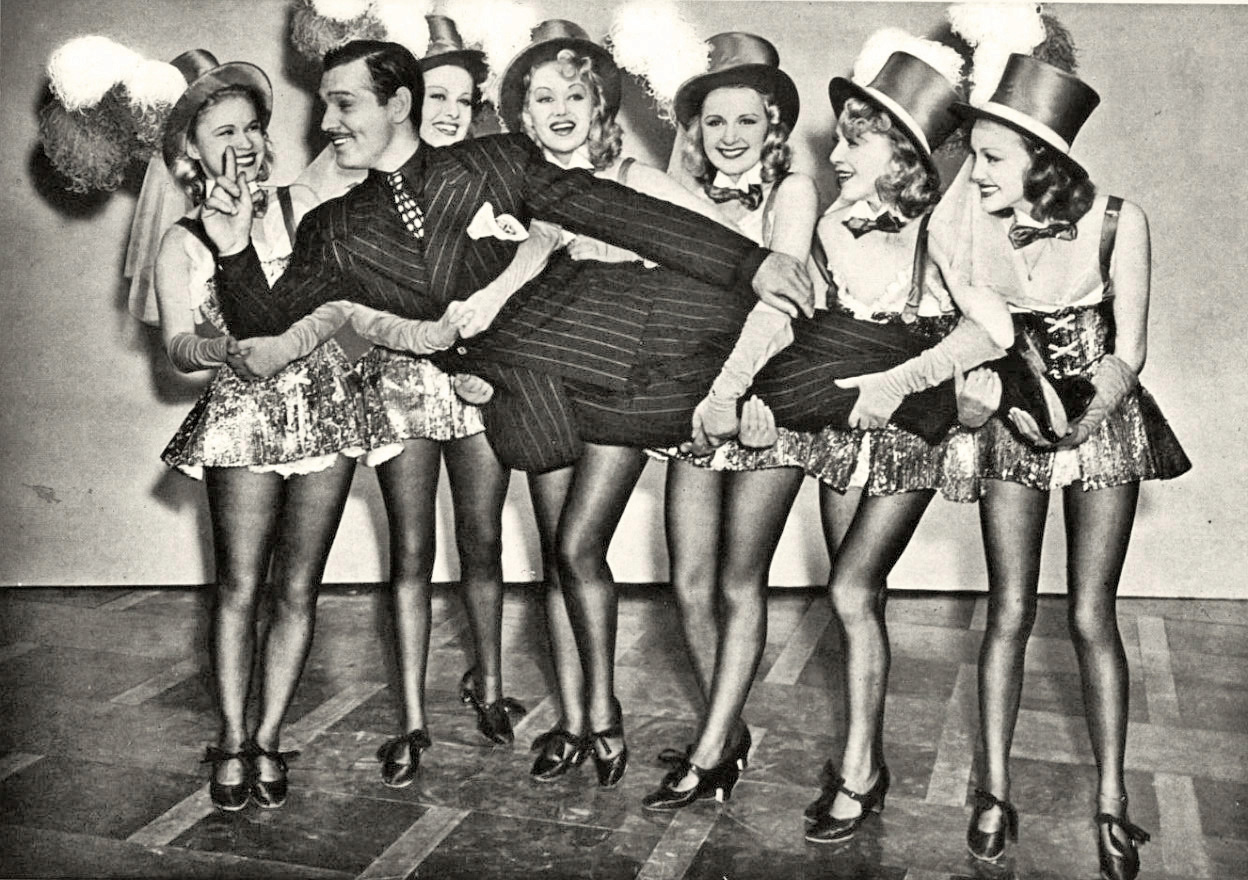
Clark Gable and chorus girls

The Jackie Gleason Show (1953)
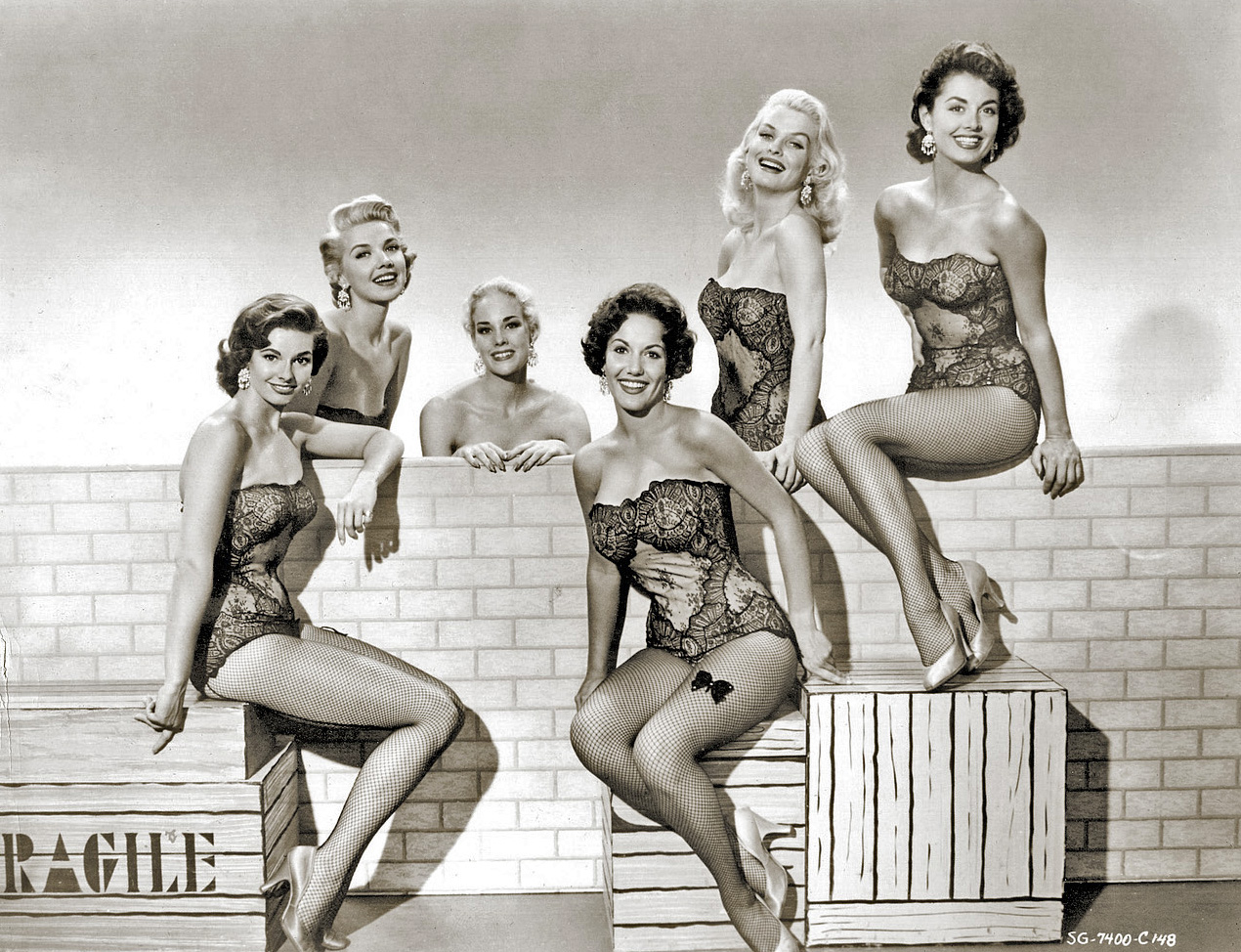
Samuel Goldwyn’s dancers, the Goldwyn Girls, popped up in numerous MGM flicks. Famous Goldwyn Girls include Lucille Ball, Betty Grable, Virginia Mayo and Jane Wyman. These gals are the last incarnation of the Goldwyn Girls, who appeared in the 1955 version of Guys and Dolls with Marlon Brando….
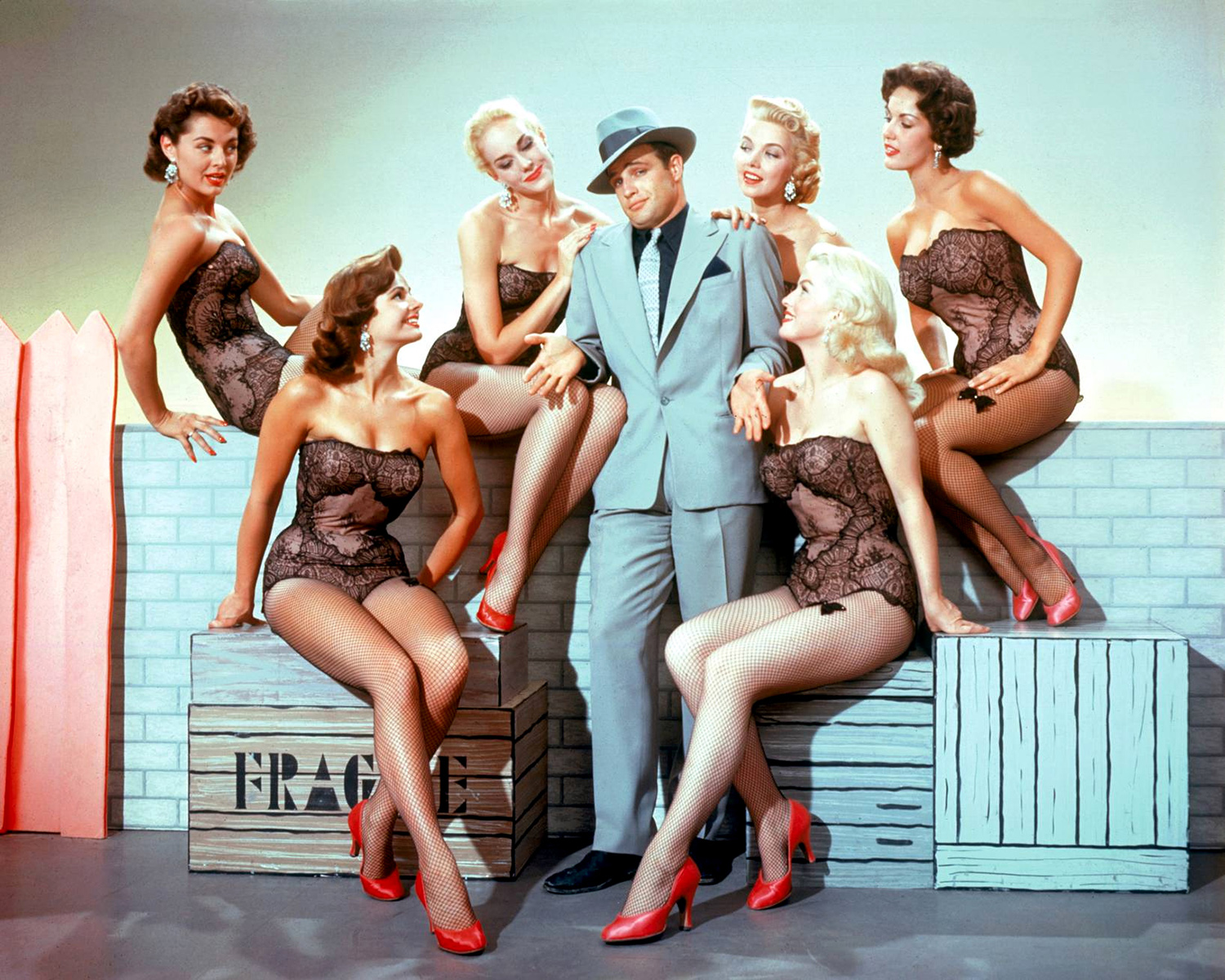
Would you like to support Flashbak?
Please consider making a donation to our site. We don't want to rely on ads to bring you the best of visual culture. You can also support us by signing up to our Mailing List. And you can also follow us on Facebook, Instagram and Twitter. For great art and culture delivered to your door, visit our shop.

